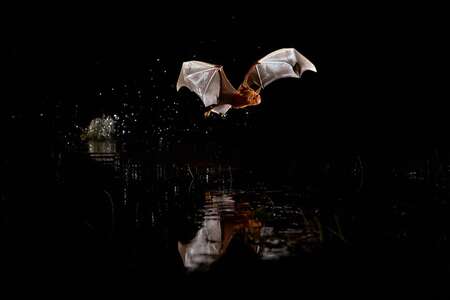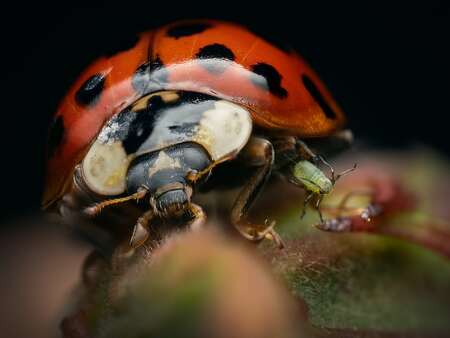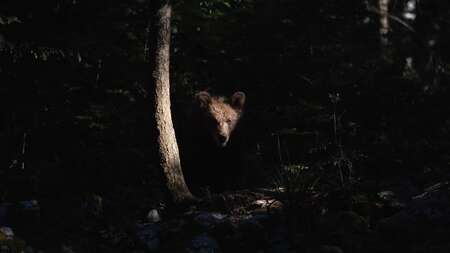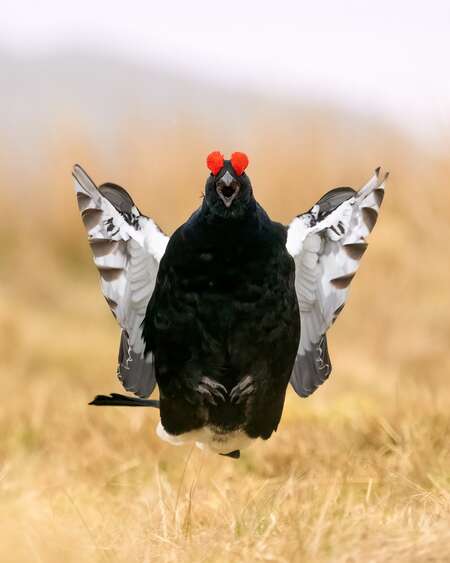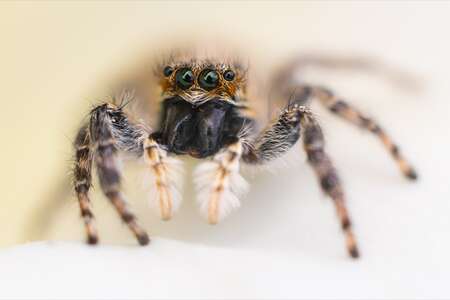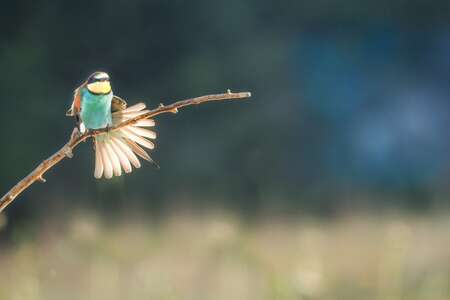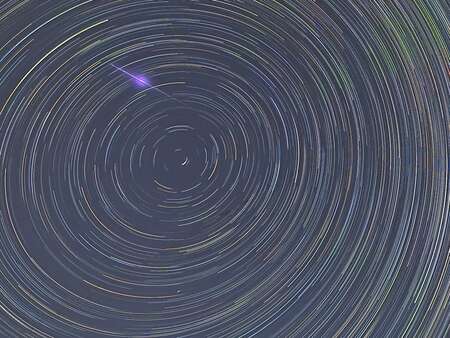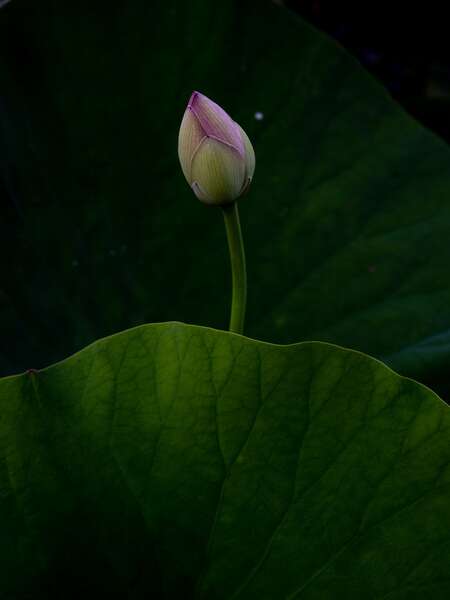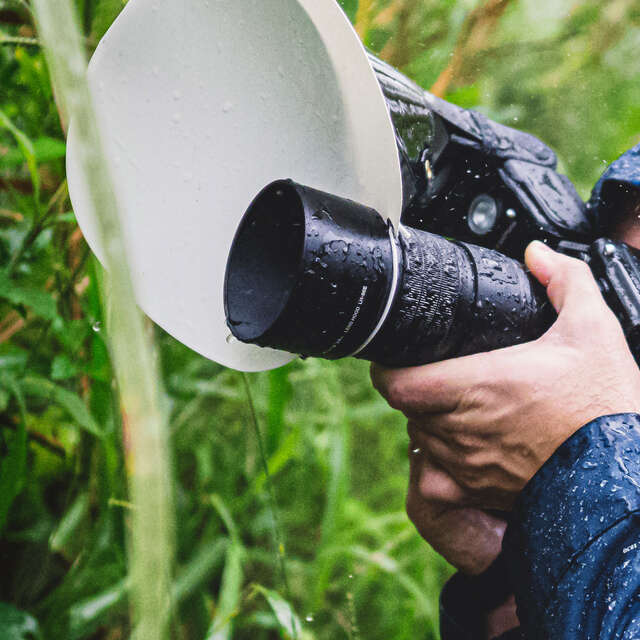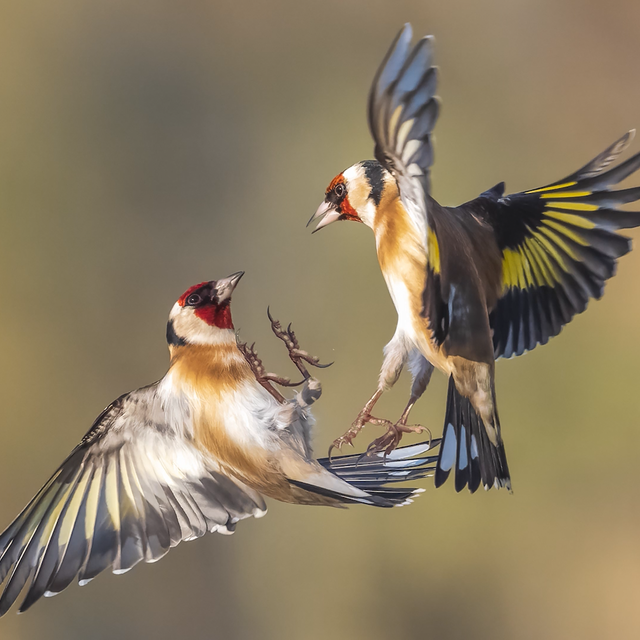Petr Bambousek
“I find so much more fun in shooting now because the possibilities that the OM-1 brings directly encourage experimentation and unconventional approaches.”
When one reads the OM-1 specs, they are impressive in their own right. Extra strong stabilization, new AF system, shooting up to 120fps in RAW resolution, built-in ND filter, lightweight, etc. But the power of the camera, and the whole system, is only truly understood in the field during real shooting. There, all that dry technical data turns into an incredibly versatile tool for your work.
In the Brazilian Pantanal one evening, I had driven to a small lake in the hope that the caimans I wanted to photograph with the OM-1 would be swimming in it. However, the caimans were only at the edge of the lake that night, and my intended plan was completely ruined. As I shone my torch on the surface, however, I saw fish-eating bats cruising back and forth. I was not at all equipped to photograph such a subject, but I figured with the OM-1 now in-hand with its extra strong stabilization, new AF system, and shooting capabilities of up to 120fps in RAW resolution, that I would at least give it a try. What could be worse than it not working out? I walked down the path to the surface and prepared two flashes and a trigger. That's all I had on this particular expedition, so it was necessary to improvise. First, I searched to find at least somewhat of a static object in the water; in this case, I used water hyacinths or caiman heads, next, I focussed on that spot and waited for a bat to fly by before manually taking the shot.
After a number of attempts, sharp photos of bats started to appear in the photos and I thought it might be interesting to get a night sky environment into the shot. The OM-1's Live Time function, which continuously shows a preview of the development of the long exposure, was perfect for this purpose and saved me a great deal of time, nerves, and frustration. After all, shooting with the environment requires a longer exposure, around 15-25s. With conventional shooting, you only find out after the entire exposure time has elapsed whether the attempt was worth it. Thanks to the Live Time function, I could see after the first second whether the flying bat had been exposed correctly. If the bat was in the frame, I let the exposure run out, if not, I quickly stopped the shot and continued with another attempt. Successively, over the course of 5 repeat visits to the two sites, I tried different techniques including capturing the wing movement of the passing bats. I honestly can't imagine using any other technique to get to this stage at all. From this unexpected mini-project, I made a final selection of about 10 photographs taken with different methods and I'm really glad I took the plunge and endured the constant raids of the ubiquitous mosquitoes!
Geraint Radford
“Photography gear should not get in the way of our adventures. My OM-1 is a companion on my journey into the macro world and I love it!”
There are so many reasons I love the OM System. The previous camera models are fantastic, and the OM-1 really builds upon those strong foundations to offer something special. I can now use Hand Held high Res Mode to capture macro images! This was tricky on my previous camera but the sheer speed of OM-1 has given me much more confidence when using this feature in the field. Having extra dynamic range and better ISO performance gives me more creative possibilities, too, especially when I am photographing deep in ancient woodland, searching for bugs, fungi and plants in amazing locations! The OM-1 is incredibly fun to use, and I feel like I love my photography more now than ever because of it!
Action shots within the macro world are quite rare. Especially ones that tell a little story. I spotted an aphid making its way over to a ladybird but didn’t expect it to climb upon it! With a lot of luck, and of course the capabilities of my kit, I managed to capture the moment when the aphid made its escape, but the depth of field was very shallow, fortunately, I quickly shot another image of the ladybird’s cute little face and blended them for a Focus Stack. Being able to hand hold with the OM-1 allowed me to adjust the focus instantly so that I didn’t miss this really cool moment!
André Boss
“I love to work in special light conditions like backlit, low light, and very low angles. For these kinds of conditions, I need a good sensor and an AF that is very precise. The OM-1 delivers all and more and helps me realize my creative visions of wildlife photography."
Photographing wildlife is more than just searching for the perfect photo. It’s about being out there and experiencing nature, discovering new places, and letting the natural environment inspire me with new ideas. Photography for me is art, therefore it should deliver a message, story, or feeling. To transport the viewer into the picture as if they were with you is an art form in itself. The OM-1 is a camera that I can rely on in every situation, which is essential in wildlife photography because you get only one chance with animals. It gives me such freedom. I don’t have to use large and heavy lenses and as a result can carry more, and travel longer while remaining inconspicuous, and can create more natural photos, playing more with different angles and light. I love to work in special light conditions like backlit, low light, and very low angles. For these kinds of conditions, I need a good sensor and an AF that is very precise.
The OM-1 delivers all and more and helps me realize my creative visions of wildlife photography. Getting the right exposure in a forest with sunlight is always a challenge. I underexposed a lot in this photo to get the light on the tree and the bear perfectly highlighted. The new sensor in the OM-1 really helped me a lot, and I still have a lot of information and details in the darker parts of the image, which makes everything more balanced.
Espen Helland
“The OM-1 was made for bird photography, and I love using it – I feel like it’s been made for me and I’ve taken some of my best images of birds in flight that wouldn’t have been possible without it.”
I loved the OM-1 from day one. It quickly became an invaluable tool and I feel at a disadvantage when I use any other camera. Looking through my image library I have many images that I know I wouldn’t have been able to capture without this camera. In addition to my wildlife photography, I also document my journey through videos on my YouTube channel and having a lightweight system has totally changed the game for me here. Wildlife photography and videography can require a lot of cumbersome gear, but the OM System gives me the tools I need to do the job in a fast and compact setup. The excellent image stabilization allows me to get handheld steady 4K footage of wildlife using long telephoto lenses, so I don’t need to take heavy tripods into the field and I can focus instead on the story, the images, and the footage I need.
The new AF AI detection is also very impressive, and has to be my favorite new feature as it has allowed me to get images I wouldn’t have been able to get with my previous kit, like a short flight burst by a male black grouse that happened in a split second. With the OM-1, I was able to get focus on the bird and capture one of the best images I have of the black grouse. Birds are fast subjects and you have to be quick to react. Having an AF system that is fast and reliable is essential to capture those split-second moments, and when it’s difficult to look through the viewfinder, I can even use the screen with AI Bird Detection to compose my image quickly without spending time moving focus points or the camera. It’s fantastic for opportunistic flight images as the AI detection locks seamlessly onto birds in the air, incredibly quickly.
Egoitz Ikaza
“The OM-1 allows me to capture the moment just as I had dreamed it.”
One of the types of nature photography that I like the most is macro, as it allows us to show those tiny features that would otherwise go unnoticed. There are some incredible animals with such amazing details! The largest eyes, proportionally, of the animal kingdom here in Spain can be found in a very specific family of arachnids that are really small, just a few millimeters in size! The Salticidae, or ‘jumping spiders’ can easily be found in country houses on the walls, floor, and usually tucked into any corner. Thanks to the minimum focusing distance of my kit – in this case the OM-1 with M.Zuiko 60mm F2.8 Macro – I was able to take these images where the spider looks really big!
The OM-1 is my go-to camera for so many reasons, with the OM System pioneering in nature photography, thanks to its innovative features that allow me to do my work as I want and without any hindrance, helping me to achieve my goals more easily and in a very comfortable and simple way. I can work perfectly at maximum apertures knowing that I will achieve the highest quality.
Micro Four Thirds actually has many advantages over APS-C. Though many people are opinionated about the smaller sensor size, it actually means you don’t have to get as close to the subject, for example, with the M.Zuiko 300mm F4.0 IS PRO lens, you have a reach of 600mm, and the ISO – in my opinion – is better than that in any APS-C system, plus, the kit is so much lighter which means you can react in a much faster way, too!
Leo Gayola
"I love the OM-1 because, to me, it means absolute freedom to create!"
It’s changed the way I work and I no longer take a tripod thanks to the superb image stabilization. I feel so much freer, and lighter, and am more able to easily create without limits. There are so many great functions and improvements in the system, but the new Pro Capture modes are just stunning, so essential, and have really given me wings; allowing for new possibilities with photographic creations and imaginations.
This photo was taken in the South of France, at a place I go every spring to observe bee-eaters. Thanks to the M.Zuiko 300mm F4 PRO and MC-20 I was able to keep my distance from these magnificent birds without disturbing them. I used Pro Capture mode and when I saw the bird start to move its feathers I pressed the shutter, and managed to have the whole cleaning sequence. I then recovered the most beautiful images of this rather rare scene.
Mark Humpage
"The OM-1 has really reinvigorated my photography passion, landing while post-pandemic life was getting back to some normality."
The pandemic changed the way that we all live and work and getting back outside was challenging in itself for many people, including myself. This new camera was like a breath of fresh air, a well-being tool that encouraged me to get back out there. I started taking more photos of the moon, night sky, clouds, weather, and wildlife than ever before, enjoying the incredible technology on offer like Focus Stacking, High-Res mode, Starry Sky AF and Multiple Exposure mode. Using the OM-1, the clarity in my moon photos has improved tremendously. Many astrophotographers take thousands of moon images using a mounted telescope and stack them together via a lengthy, monotonous post-processing process to achieve a single clear image. I am able to do all this with the OM-1, with a single image and handheld – incredible!
This five-hour star trail was captured and processed all in-camera using the Live Composite mode – with no lengthy post stacking processing required – with the OM-1 and M.Zuiko 7-14mm F2.8 PRO lens. The final image shows five hours of Earth's rotation with beautiful Perseid meteors flying over the Celestial North Pole. The camera has essentially captured something our eyes cannot see in a single moment of time. A symbiotic relationship with our galaxy and beyond, looking at a subject that is millions of years old. It really is beautiful and incomprehensible. The image has been cropped to feature the Perseid. I mounted the camera on a tripod in the garden and set up the composition using the 7-14mm, framing the tree in the foreground, and pointing towards the North Star Polaris. For powering such a long exposure I used an external power device, plugged into the camera and hung on the tripod. The star trail was captured using Live Composite, and I chose 15s exposures and let the camera shoot for five hours. The purple colour of the Perseid is because it is rich in Calcium, whereas a more vibrant red meteor would have more Nitrogen/Oxygen content.
Michaela Skovranova
“Thanks to the light weight of the OM-1, it allows me to move more freely. I can use long focal length lenses without having to use a tripod, and carry more lens options along with me on my travels.”
Being a nature and wildlife photographer, I am often out photographing in low-light conditions; looking for the early morning or late afternoon golden glow, which is also when the wildlife is most active. The OM-1 handles low-light conditions brilliantly. I love utilising the Intelligent Subject Detection and along with that, the amazing SYNC IS which is an absolute game changer, especially when working with longer focal length lenses.
The image stabilisation is so powerful (up to 8 stops with SYNC IS). It allows me to handhold the camera with long lenses such as the M.Zuiko 300mm F4 IS PRO using lower shutter speeds and the images are still pin sharp. The new processor has 3x faster-processing power than the OM-D E-M1 Mark III as well as 1 stop better dynamic range this with the combination of the AF/AE tracking 50fps high-speed sequential shooting (and 120fps in AF/AE lock) makes the system incredibly efficient when it comes to documenting fast-moving wildlife in varied lighting conditions. The OM-1 is beautifully designed, the menu system is easy to navigate, the viewfinder makes documenting in darker conditions much easier, and with incredible battery life, image stabilisation, and improved video functions, it’s a very versatile piece of equipment for documentary and environmental work.
